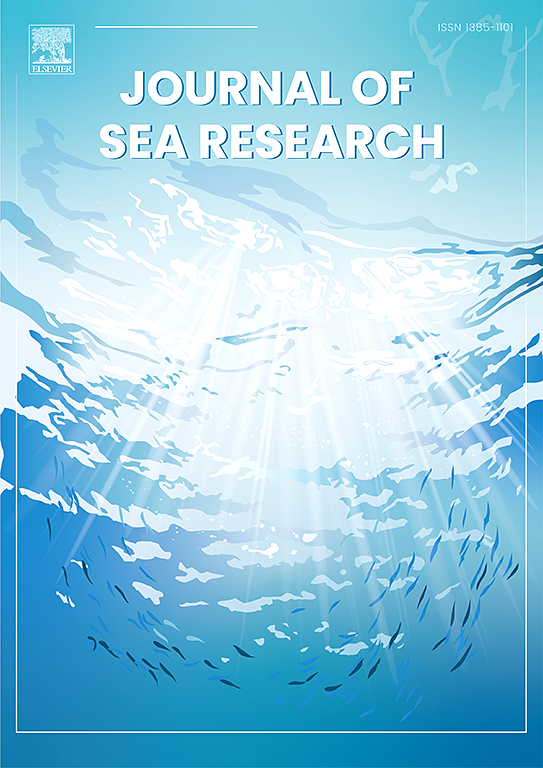Unravelling temporality and environmental drivers of jellyfish presence in an urban beach
IF 2.9
4区 地球科学
Q2 MARINE & FRESHWATER BIOLOGY
引用次数: 0
Abstract
Jellyfish blooms affect human activities, causing negative socio-economic impacts. Many questions regarding the presence of these invertebrates remain unknown, including when and why they appear. The aim of this study was to unravel when and which environmental drivers drive the arrival of jellyfish to the urban beach of Las Canteras (Canary Islands), by taking advantage of a long-term temporal series on jellyfish stings and semi-qualitative abundances of three jellyfish species (Physalia physalis, Velella velella and Pelagia noctiluca), provided by the Red Cross rescue service. First, we described inter- and intra (seasonal) annual patterns. Then, daily patterns in stings and monthly jellyfish abundances, by means of a model selection strategy, were connected with daily and monthly environmental drivers (zooplankton biomass, Sea Surface Temperature, SST, wind intensity, as well as climatic indices related to El Niño and La Niña events). We detected a strong seasonal trend in the number of jellyfish stings, with larger values in spring and summer relative to autumn and winter. Physalia physalis and Velella velella appeared during winter, which was also revealed by the model selection approach on the effect of environmental predictors (SST, in particular) on their abundances. In contrast, Pelagia noctiluca -the most abundant species - was present all year round, with the summer months as those with the highest abundances. There was a significant correlation between the daily number of stings and the daily presence of Pelagia noctiluca over time. In brief, the occurrence of the three jellyfish species, in the study area, is seasonally partitioned, with SST over time as the most relevant environmental predictor of both the number of stings and the abundances of the three jellyfish species.
解开水母在城市海滩存在的时间性和环境驱动因素
水母大量繁殖影响人类活动,造成负面的社会经济影响。关于这些无脊椎动物的存在,许多问题仍然未知,包括它们何时以及为什么出现。本研究的目的是通过利用红十字会救援服务提供的水母蜇伤的长期时间序列和三种水母(Physalia physalis, Velella Velella和Pelagia noctiluca)的半定性丰度,揭示水母何时以及哪些环境驱动因素促使水母到达Las Canteras(加那利群岛)的城市海滩。首先,我们描述了年间和年内(季节)的模式。然后,通过模型选择策略,将蜇伤的日模式和水母的月丰度与日和月环境驱动因素(浮游动物生物量、海面温度、海温、风强度以及与El Niño和La Niña事件相关的气候指数)联系起来。海蜇蜇伤数量有明显的季节变化趋势,春季和夏季的蜇伤数量大于秋季和冬季。Physalia physalis和Velella Velella在冬季出现,这也揭示了环境预测因子(尤其是海温)对其丰度影响的模式选择方法。相比之下,最丰富的物种夜光Pelagia noctiluca全年都有,夏季是丰度最高的月份。随着时间的推移,日蜇伤次数与夜蛾日存在量之间存在显著的相关性。简而言之,这三种水母在研究区域的发生是季节性的,海温随时间的变化是三种水母蜇伤数量和丰度的最相关环境预测因子。
本文章由计算机程序翻译,如有差异,请以英文原文为准。
求助全文
约1分钟内获得全文
求助全文
来源期刊

Journal of Sea Research
地学-海洋学
CiteScore
3.20
自引率
5.00%
发文量
86
审稿时长
6-12 weeks
期刊介绍:
The Journal of Sea Research is an international and multidisciplinary periodical on marine research, with an emphasis on the functioning of marine ecosystems in coastal and shelf seas, including intertidal, estuarine and brackish environments. As several subdisciplines add to this aim, manuscripts are welcome from the fields of marine biology, marine chemistry, marine sedimentology and physical oceanography, provided they add to the understanding of ecosystem processes.
 求助内容:
求助内容: 应助结果提醒方式:
应助结果提醒方式:


